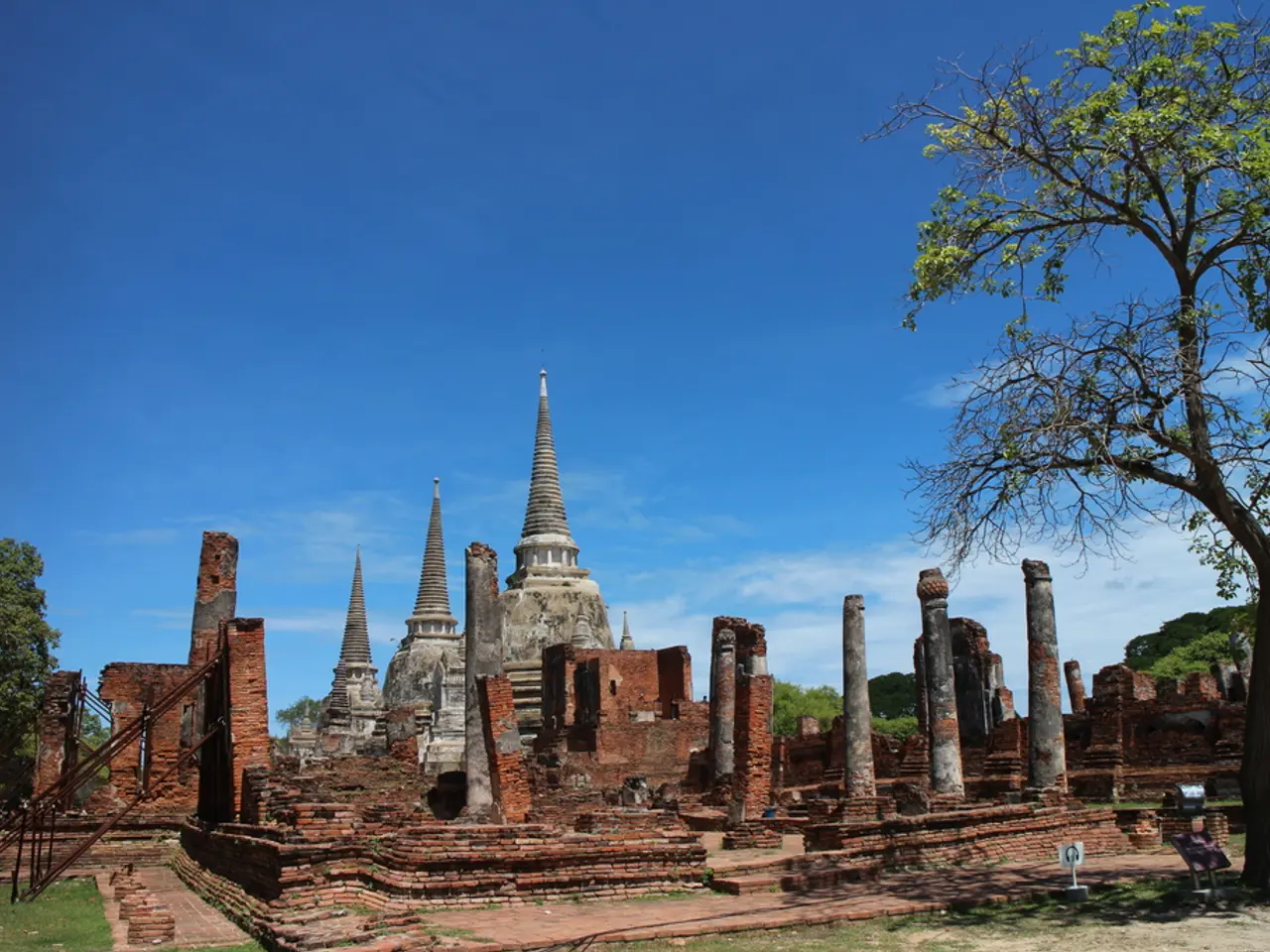Panoramic perspective of the urban landscape, Dhaka, Bangladesh
The northeastern corner of the Indian subcontinent, including Bangladesh, Northeast India, and Myanmar, is tectonically active and faces significant earthquake risks due to its location in a zone of ongoing plate collision and fault interactions. This region, which is part of the broader Himalayan Subduction Zone, experiences frequent earthquake swarms and tectonic activity.
A recent study, led by geologist Michael Steckler of Columbia University's Lamont-Doherty Earth Observatory and published in Nature Geoscience in 2016, has shed new light on the region's seismic activity. The study suggests that the region, home to over 140 million people, could be sitting atop an active megathrust fault.
The study used GPS data from 26 tracking stations installed in Bangladesh from 2003 to 2014. The researchers found an extra 0.51 to 0.67 inches (13 to 17 millimeters) of annual motion in the region, indicating that the Indian tectonic plate is actively slipping underneath the Eurasian plate.
However, it's important to note that the region is not classically described as lying directly on a major megathrust fault like the Sunda megathrust in Sumatra, Indonesia. Instead, the faulting in Northeast India, Bangladesh, and Myanmar involves multiple complex transform and thrust faults tied to the India-Eurasia plate collision and the Burma microplate.
The study also highlighted the potential instability of the sediments in the region, particularly around the eastern outskirts of Dhaka. These sediments could amplify seismic waves in a major earthquake, posing a significant threat to the population.
The exact timing of the fault's potential failure is unknown, but the study indicates that the fault has been accumulating stress for over 400 years. This, combined with the high population density in the study area, which was over 1,001-5,000 people per square kilometer in 2014, and the lack of preparedness in major cities like Dhaka, raises concerns about the region's vulnerability to future seismic events.
The study area includes India, Bangladesh, Myanmar (Burma), and parts of Nepal and Bangladesh. One of the most notable movements observed in the study was the Shan Plateau in Myanmar, which is moving southwest at a rate of nearly 2 inches (51 millimeters) a year relative to the Indian Peninsula.
The lack of preparedness in Dhaka, including ignored building codes and public uncertainty about what to do during an earthquake, has already posed threats. During the 2015 Nepal earthquake, at least three Bangladeshis died due to panic attacks, cardiac arrest, and stampedes.
The study's findings underscore the need for continuous seismic monitoring and preparedness in the region. Dhaka's rapid development poses challenges for determining the threat facing the city, as its rich sedimentary deposits make it difficult for researchers to study the geology.
In conclusion, while the risk of major earthquakes is significant, it arises from active faulting in a tectonically complex region rather than a single megathrust fault system. The study serves as a reminder of the importance of understanding and preparing for the seismic risks in the region to protect the lives and properties of the millions of people living there.
- The research in the Himalayan Subduction Zone, including the study of Bangladesh, Northeast India, and Myanmar, falls under the realm of environmental science and geology.
- In light of the ongoing plate collision and fault interactions in the region, understanding the seismic activity is critical for the medical-condition risks and safety of the area's over 140 million inhabitants.
- With Dhaka's rapid development and rich sedimentary deposits complicating geological studies, there's a need for modern technology and finance to support ongoing seismic monitoring and education-and-self-development in earthquake preparedness.
- In the event of a seismic event, overpopulated cities like Dhaka would be particularly vulnerable, as seen by the fatalities during the 2015 Nepal earthquake.
- The rivers and environment in the region, alongside its economic and social establishments, may suffer severe damages as a result of potential earthquakes in the future.







